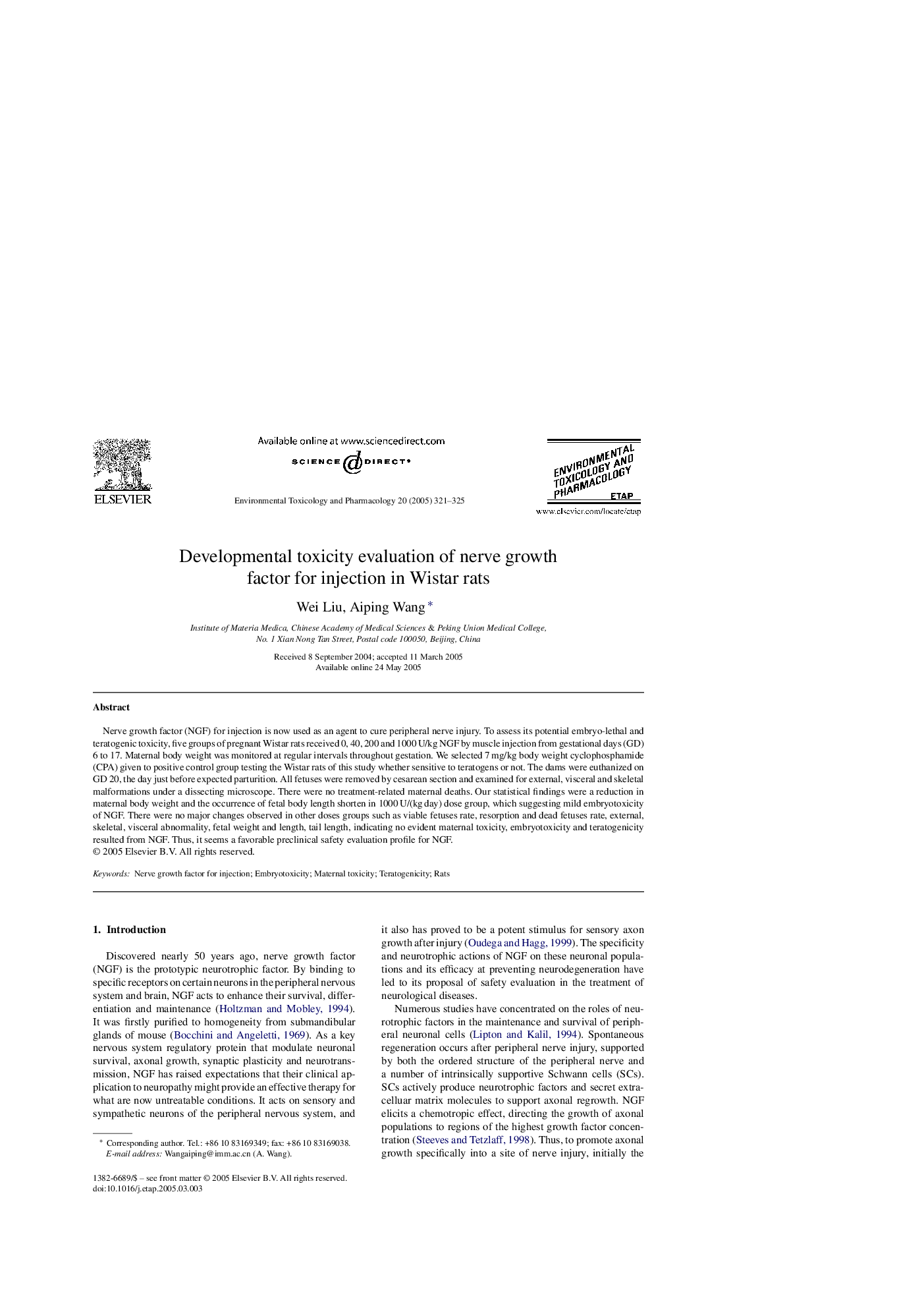| Article ID | Journal | Published Year | Pages | File Type |
|---|---|---|---|---|
| 9030144 | Environmental Toxicology and Pharmacology | 2005 | 5 Pages |
Abstract
Nerve growth factor (NGF) for injection is now used as an agent to cure peripheral nerve injury. To assess its potential embryo-lethal and teratogenic toxicity, five groups of pregnant Wistar rats received 0, 40, 200 and 1000 U/kg NGF by muscle injection from gestational days (GD) 6 to 17. Maternal body weight was monitored at regular intervals throughout gestation. We selected 7 mg/kg body weight cyclophosphamide (CPA) given to positive control group testing the Wistar rats of this study whether sensitive to teratogens or not. The dams were euthanized on GD 20, the day just before expected parturition. All fetuses were removed by cesarean section and examined for external, visceral and skeletal malformations under a dissecting microscope. There were no treatment-related maternal deaths. Our statistical findings were a reduction in maternal body weight and the occurrence of fetal body length shorten in 1000 U/(kg day) dose group, which suggesting mild embryotoxicity of NGF. There were no major changes observed in other doses groups such as viable fetuses rate, resorption and dead fetuses rate, external, skeletal, visceral abnormality, fetal weight and length, tail length, indicating no evident maternal toxicity, embryotoxicity and teratogenicity resulted from NGF. Thus, it seems a favorable preclinical safety evaluation profile for NGF.
Related Topics
Life Sciences
Environmental Science
Health, Toxicology and Mutagenesis
Authors
Wei Liu, Aiping Wang,
